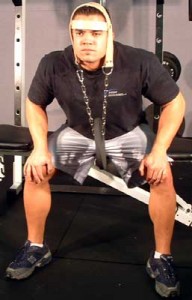What is Neck
The neck is the part of the body, on many terrestrial or secondarily aquatic vertebrates, that distinguishes the head from the torso or trunk. The neck supports the head and keeps it aligned with the body. It is at the top most part of the spine. The spine also runs through the mid and the lower back. The neck is made up of vertebrae, joints, and muscles. The vertebrae are the bones of the spine. They protect the spinal cord inside it and give support for muscles and joints.
Function of the neck:
The main obvious function of the neck is to hold up the head. The neck also contains several blood vessels that allow blood to reach the head and the brain. The neck contains the trachea and part of the esophagus, which allow air and food/water to reach the body, respectively. The neck also contains the upper spinal cord, which controls body movements and is connected to the brain stem in the neck.
Benefits of Neck Exercise:
Exercising your neck can make it stronger, more flexible and reduce neck pain that is caused by stress and fatigue.
Exercising the neck muscles has three benefits:
• It strengthens the muscles of the neck, upper back, and shoulders
• It makes the neck more flexible, increasing its range of motion
• It relaxes the neck and reduces pain
Weighted Neck Extensions Using a Head Harness
Neck extension is a motion where in the neck is bended backward such as when you are looking up to the sky. The posterior neck muscles are the ones making this movement possible. They are anatomically layered close to each other so you can work these muscles all at once when doing some neck exercises. One of the most effective strengthening exercises for posterior neck muscles is the weighted neck extension. Since this activity involves the use of a load, it is considered as an advanced type of exercise — which means this is only advisable for individuals with strong neck muscles.
Instructions
• Prepare the flat barbell plate and place it on the chain attached to the harness
• Sit on the bench, with your upper body slightly bent forward, to allow the weight to dangle free from the harness.
• Make sure that legs are opened wide and feet are flat on the floor to ensure a stable base of support
• Place your hands on your knees to provide more stability
• Flex your neck forward by looking down on the floor with chin close to your chest
• Lift your head up as high as you can, or if you are strong enough, lift your head up until you are looking up front.
• Bring your head back down and lift it back up again.
• Repeat this procedure 5 to 10 times and relax.
Tips for Neck Exercise:
• Before you start a neck exercise program, talk to your healthcare provider, especially if you have had a neck accident or a history of neck problems.
• Stretch slowly, and avoid sudden movement. Pay attention to your muscles stretching.
• When you have stretched it as far as it can comfortably go, hold for 5 seconds, then slowly return to the original position.
• Breathe slowly and deeply as you exercise. Never stretch to the point where it is no longer comfortable.
• Go to the point where you feel a mild tension, and relax as you hold the stretch. The feeling of tension should go away as you hold the position.
• If it does not ease off slightly and find an amount of tension that is comfortable for you.
• Do 5 repetitions for each exercise unless your healthcare provider has requested a different number of repetitions.











